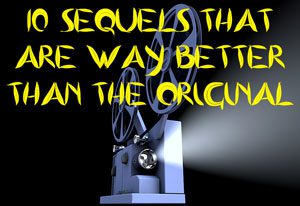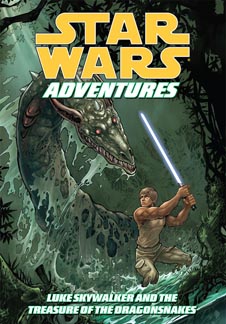Dark Horse’s “Star Wars Adventures,” a series of six comic digests from 2009-11, seems like a good way to experience character-focused stories set during the time of the original trilogy. However, these comics are aggressively aimed at kids, so there’s not a lot of depth for adult readers. Here are my rankings of the six volumes:
1. “Luke Skywalker and the Treasure of the Dragonsnakes” — By far the most interesting of the six is “Luke Skywalker and the Treasure of the Dragonsnakes.” Like the “Episode I Adventures” series and Marvel’s “Droids” Issues 6-8, it tells a story set during a “Star Wars” movie, in this case “The Empire Strikes Back.” Logistically, this is the only way to tell a new Luke-and-Yoda story, and it also makes more logistical sense than those other “story within a movie” tales. A lot of time had to pass as the Millennium Falcon traveled between star systems at sublight speed, so there’s certainly time for a more extended training lesson on Dagobah.
Tom Taylor writes spot-on Yoda dialog, but the real pleasure is the art by Daxiong, who draws a perfect Yoda with a variety of facial expressions. The duo also explores Dagobah flora and fauna further, include the spider-trees given life in the 1995 “Illustrated Star Wars Universe.”
2. “Princess Leia and the Royal Ransom” — Second place goes to Jeremy Barlow’s “Princess Leia and the Royal Ransom.” Set between “A New Hope” and “Empire,” it features exchanges in the spirit of Han and Leia’s Echo Base hallway conversation. It caps with a funny punchline where Han is rewarded for his heroism with the offer to marry a princess, and – to Leia’s amusement — he runs scared.
3. “Boba Fett and the Ship of Fear” — Third place goes to “Boba Fett and the Ship of Fear,” written by Barlow with more gorgeous art by Daxiong. It’s in the spirit of other “Boba Fett” comics – with the bounty hunter doing his thing — but it’s G-rated rather than PG-13.
4. “The Will of Darth Vader” — In fourth place is Taylor’s “The Will of Darth Vader,” which is a good lesson in “making decisions versus following orders” for young readers. It finds Vader interacting with a talkative captive who taunts Vader for just doing what the Emperor tells him. In the end, Vader allows the man to go free, rather than killing him as the Emperor would demand, thus asserting a tiny bit of free will and giving a hint of what he’ll do at the end of “Return of the Jedi.”
5. “Han Solo and the Hollow Moon of Khorya” — Barlow’s “Han Solo and the Hollow Moon of Khorya,” set before “A New Hope,” gets fifth place by default. It’s the first entry in the “Adventures” omnibus, and the evocative title had me hoping for something in the vein of Brian Daley’s novels, if a bit lighter. No such luck; it’s a broad tale about how Han and Chewie are getting on each other’s nerves.

Billal, an acquaintance from Han’s younger days working for Shrike (although Billal is not mentioned in “The Paradise Snare”), gets on Han’s nerves, thus inspiring him to bury the hatchet with Chewie. Han then drops Billal off on Arbra, the future Rebel base in the Marvel comics, and Billal is somehow familiar with Hoojibs. So while the ending attempts to be a cool continuity nod, it actually doesn’t make sense.
6. “Chewbacca and the Slavers of the Shadowlands” — The worst “Adventures” entry is Chris Cerasi’s “Chewbacca and the Slavers of the Shadowlands.” It’s an interminable flashback tale of a young Chewie and his friends taking on slavers in the jungles of Kashyyyk. Some might enjoy the watercolor art by Jennifer L. Meyer, but I had to look at it closely to tell which Wookiee was which, and that’s not much fun when the story is this flat.
“Luke Skywalker and the Treasure of the Dragonsnakes” truly is an artistic treasure, so you might want to pick up the individual digest rather than the full omnibus, as the appeal of the other five tales is limited to young readers.

